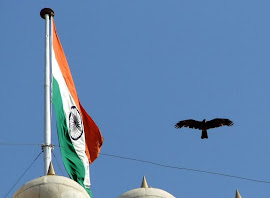Economic Crisis: Indian Agenda
The financial crisis in the US, the worst since the Great Depression of 1929, is threatening to reach perilous proportions. The collapse of the big five financial giants on Wall Street — Fannie Mae, Freddie Mac, AIG, Lehman Brothers and Merrill Lynch — with revenues totalling nearly $322 billion in 2007, followed by two of the largest banks — Washington Mutual (WaMu) and Wachovia — has sent shock waves through global financial markets.
GRAVITY OF THE CRISIS The gravity of the financial crisis that has hit the US economy can be gauged from the fact that the cost of the rescue of these financial giants to the Federal Reserve and Treasury Department has been estimated at close to a trillion dollars (equivalent to India’s national income). According to some analysts, the total cost on this count could go up to $2 trillion since the financial turmoil is not likely to end anytime soon. Most of these banks had created debts to the tune of 30-40 times their equity against the prudential norm of not exceeding ten times. According to some estimates, the derivatives trade had grown five times between 2002 and 2007 to exceed $500 trillion, thus making this ‘shadow’ economy almost ten times bigger than the real economy of the world. After a tense week and prolonged debate, the US Congress on October 3, finally passed the $700-billion financial bailout plan to avert a major national crisis. However, even after the clearance of the bailout package, the stock markets, world over, have plunged further as the feeling of uncertainty continues. The financial turmoil is fast spreading to Europe, whose economies are also showing signs of sliding into a recession, and the ripple effects are bound to have some adverse effects on the rest of the world, including China and India.
IMPACT ON INDIA What is more worrisome, tIn India, the Reserve Bank of India has been pumping in liquidity into the system and local banks have been borrowing at least Rs 70,000 crore on an average over the past three weeks under its liquidity adjustment facility (LAF). Even so, liquidity has been drying up. Recently, the Asian Development Bank (ADB) down-scaled the growth expectations of many Asian economies, including India’s, in its half yearly report: Asian Development Outlook 2008.
The ADB attributes this to the worsening conditions in major industrial economies that will weaken demand for goods and services. “The myth of uncoupling has been exploded”, the report says. India’s GDP growth estimate for the current fiscal (2008-09) has been downgraded from 8 per cent to 7.4 per cent and, for the next financial year (2009-10), from 8.5 per cent to 7 per cent. ADB bluntly states that “very large fiscal imbalance created by the current level of subsidisation of oil, fertiliser and food, as well as other off-budget items, sets a daunting task for economic management.” With the financial turmoil in the US and Europe showing signs of worsening since the publication of ADB’s half-yearly report, one need not be surprised if GDP growth in India turns out to be even lower than that projected by ADB — just around 7 per cent or so for the current fiscal. In line with the falling capital markets across the world, which have already wiped out investor wealth of over $10 trillion this year so far, the Indian stock market has witnessed an unprecedented fall over the past few weeks. Not surprisingly, FIIs have been pulling out from the stock market in a big way, corporate borrowings from the global markets are becoming increasingly difficult, raising money for new investments through public issues is on hold, and liquidity in the economy is fast drying up.
SOME LESSONS At the outset, it must be admitted that the abundant caution exercised by the former RBI Governor, Dr Y. V. Reddy and going slow on opening up new complex financial products helped to insulate the country’s from a major financial crisis.
Following the sub-prime crisis in the US over a year ago, his approach was cautious (non-reformist according to critics) on all fronts — whether in allowing the hedge funds to invest in Indian equities and real estate, greater FDI in the banking sector or allowing excessive capital inflows.
Dr Reddy has received compliments from a number of experts, including the Chief Economic Advisor, Dr Arvind Virmani. This is, of course, not to suggest that India should not go ahead with financial sector reforms. But such reforms should be accompanied by prudential norms, efficient regulatory systems, and above all, sticking to healthy capital adequacy norms.
The ongoing upheavals in the banking and financial sectors worldwide, have thoroughly exposed the inadequacies in the system to contain huge losses, solely because of the absence of a healthy risk assessment and management system and a strong capital base to absorb the shocks of these losses.
Meanwhile, the growing trade and current accounts deficits following a steep rise in oil and non-oil imports, slowdown in capital inflows and services exports, call for appropriate policy response. Evidently there is a need to go slow on capital account convertibility. It is also time for the RBI to initiate measures to ease the liquidity position in the economy as the commercial banks have been finding it difficult to meet the genuine credit requirements of industry and trade.
True, in a welcome measure, it has announced a 1.50 basis point cut in the cash reserve ratio (CRR) from a record 9 per cent to 7.5 per cent to infuse Rs 60,000 crore into the system.
But this is far from adequate. A further lowering of CRR as well some reduction in the repo rate will be in order not only to infuse more liquidity but also to lower interest rates to ensure that the growth of the economy is not hampered. For, there is already evidence that the relentless monetary tightening by the RBI for quite sometime to rein in inflationary pressures has been hurting the growth prospects of the economy.
.jpg)








.jpg)

0 comments:
Post a Comment